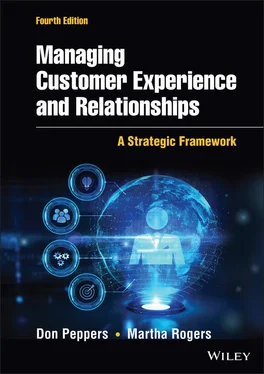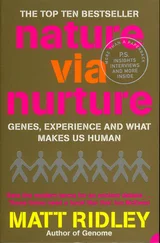And again: Treat different customers differently.
The customer revolution is part of the reason enterprises are committing themselves to keep and grow their most valuable customers. Today's consumers and businesses have become more sophisticated about shopping for their needs across multiple channels, and more and more CMOs refer to this as multi-channel marketingor omnichannel marketing. What it really means is that customers will come at companies in various ways, in ways that suit those customers, and companies must be ready to present a logical, coherent response to each customer—not just messages sent through media channels—and to remember what is learned through each interaction and apply that learning to all channels. The idea is not just to make sure that we prepare and send a message, but to make sure each customer receives one. The online channel, in particular, enables shoppers to locate the goods and services they desire quickly and at a price they are willing to pay, which forces enterprises to compete on value propositions other than lowest price.
Contrary to the prevailing belief, a company is not omnichannel just because it is capable of interacting with customers in every possible channel. If the word omnichannel is to mean anything at all, it must stand for a customer experience that is seamlessly integrated across all the different channels any particular customer chooses.
This means a company can only be considered to have omnichannel capabilities if the history and contextof each customer's interactions in one channel are flawlessly carried over into the next channel, and the next, and the next. Just because a company can interact with a customer online as well as by phone, and perhaps even by text and chat and social media, it doesn't mean they are an omnichannel company, or that they offer integrated marketing. A company may interact with its customers via a number of different channels, but if these interactions aren't linked together from channel to channel by each customer's own context and history, then the customer will be frustrated and experience more friction than is necessary.
A company may have the capability to handle many channels, but that doesn't mean it has an omni channel capability. We'll talk more about this in Chapter 8.
A company may have the capability to handle many channels, but that doesn't mean it has an omni channel capability.
WHAT CHARACTERIZES A RELATIONSHIP?
Merriam-Webster defines relationship as “the state of being related or interrelated.” 8 Because we are talking specifically about relationships between businesses and their customers, it is important that we agree on a few of the elements that make up a genuine relationship. The most important issue for us to consider is how well our own definition of relationship helps companies compete successfully in the customer dimension. Rather than settle for a few words from a dictionary, let's list some of the distinct qualities that should characterize a relationship between an enterprise and a customer.
First, a relationship implies mutuality. In order for any state of affairs to be considered a relationship, both parties have to participate in it and be aware of its existence. This means that relationships will inherently be two-way in nature. This might seem like common sense. You can't have a relationship with someone if they don't have a relationship with you, right? It's a very important distinction for parsing out what does and doesn't constitute relationship-building activity with customers. Can a person have a genuine relationship with a brand? Well, it doesn't happen just because a customer likes the brand and buys it repeatedly. A customer can have a great deal of affection for a brand but, by our definition, a relationship between the customer and the brand can be said to exist only if the brand (i.e., the enterprise behind the brand) is also aware of the individual customer's existence, creating a new definition with an interesting new twist for the term brand awareness .
Second, relationships are driven by interaction . When two parties interact, they exchange information, and this information exchange is a central engine for building on the relationship. Information exchange, of course, also implies mutuality. But interactions don't have to take place by phone or in person or online. An interaction takes place when a customer buys a product. Every interaction increases the amount of information a company has about a particular relationship.
This point leads to the third characteristic of a relationship: It is iterative in nature. That is, mutual interactions between both parties build up a history over time to create a larger context. This increases a relationship's efficiency, because each new interaction is an iteration of all the previous ones. The more you communicate with any one person, the less you need to say the next time around to get your point across. One practical implication of this iterative nature of a customer relationship is that it generates a convenience benefit to the customer for continuing the relationship. Amazon remembers your book preferences, your address, and your credit card number, based on your previous interactions with it. To purchase your next book from Amazon, you only need to find it and click on it. If you've already bought enough books from Amazon, you might not even need to search for the next one; the company can do a pretty good job of finding it for you and putting it in your recommendations. The richer the context of any customer relationship, the more difficult it will be for the customer to recreate it elsewhere, and so the more loyal the customer is likely to be. (We find that Amazon recommends to each of us all of the new books we write—not surprising, since they're all very relevant!)
Another characteristic of a customer relationship is that it is driven by an ongoing benefit to both parties. Convenience is one type of benefit for customers, but it is not the only one. Participating in a relationship will involve a cost in money, time, or effort, and no customer will engage for long in any relationship if there is not enough continuing benefit to offset this cost. However, precisely because of the context of the relationship and its continuing benefit to both parties, each party in a relationship has an incentive to recover from mistakes. This is because the future value that each party expects from the continued relationship can easily outweigh the current cost of remedying an error or problem.
Characteristics of a Genuine Business Relationship
Mutual
Interactive
Iterative
Provides ongoing benefit to both parties
Requires a change in behavior for both parties
Unique
Requires—and produces—trust
Relationships will result in a change in behavior by both parties—the enterprise and the customer—in order to continue. After all, what drives the ongoing benefit of a relationship is not only its context—its history of interactions, developed over time—but also the fact that each party's current and future actions appropriately reflect that historical context. This is an important characteristic to note separately, because companies sometimes mistakenly believe that interactions with customers need only involve routine, outbound communications, delivered the same way to every customer. But unless the enterprise's actions toward a particular customer are somehow tailored to reflect that customer's own input, there will be no ongoing benefit for the customer, and as a result, the customer might not elect to continue the relationship.
Читать дальше












